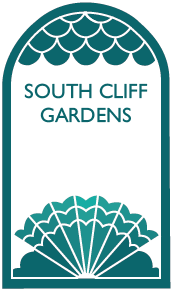Tim Burkinshaw, Ecologist, Parks and Countryside.
Among wider aims to enhance biodiversity the Parks Department is very keen to support pollinator species in particular. We have to keep parks and green spaces looking their best with the resources we have available. Public opinion and perception always plays a part in the balance between a tidy appearance and allowing areas to develop to enhance biodiversity.
We have projects across the Borough which benefit pollinators and continue to look for new areas where sympathetic management for pollinators can co-exist with our duty to maintain public realm to a high standard. This is always subject to resources eg staff, expertise and appropriate machinery.
We are increasingly developing community-led projects, eg harnessing expertise of local naturalist groups to survey, monitor and manage the most valuable areas.
Here are some examples of the types of measures:
Formal bedding and planting in parks. At least 25% of our seasonal bedding as pollinator-friendly plants. Across Filey, Whitby and Scarborough numerous examples traditional seasonal bedding replaced with bee and butterfly-friendly perennials.
Informal planting, parks and open spaces. Wildflower areas and tree planting for blossom diversity.
Roundabouts and street plantings. Perennials and wildflowers increasingly used when renovating.
Grass mowing regimes. Numerous places where we have introduced or are trialling reduced cutting regimes, including parks and open spaces, car parks, bankings, verges and cemeteries.
Dedicated wildflower areas and wildflower meadow schemes. Eg Cemeteries and Crematorium.
Cinder Track. Some existing habitat projects since 2018. Numerous opportunities to develop volunteer-led habitat management to benefit pollinators and other wildlife with new Ranger in post.

Sites in the Borough managed to benefit pollinators:
Filey
- Decorative dahlia border now a pollinator bed
- Ravine Hill now a pollinator bed
- Old shield bed in Northcliffe Gardens
- Bee Border to be planted up 2021 with pollinators
- Filey Flood Alleviation Scheme – cutting regime for bankings, swales and basins. Dedicated wildflower areas in the scheme design.
Scarborough
- Manor Road Roundabout – perennial planting
- Manor Road bankings
- Valley Road and Valley Gardens
- Wildflower area in Woodlands Cemetery (‘Natural Burial Area’)
- Central bed in St Nicholas Cliff
- Old Rose beds in Woodlands Ravine to be turned over to wildflowers
- Looking at Dean Road Cemetery beds and cutting regimes of grass areas
- Looking at a pollinator border in Peasholm
- Burr Bank car park
- Burniston Road Bankings – Signage to be installed
- South Cliff – Holbeck slope project in discussion with Scarborough Naturalists
- South Cliff New pollinator border within the South Cliff Gardens Restoration
- Eastfield roundabout – trial sowing with wildflowers
- Seamer Roundabout – renewal with perennials
Whitby
- Pannett Park bankings – grass left longer in season
- New Bridge banks – grass left longer in season
- Larpool cemetery area – trail wildflower ‘hay meadow’ management, late cut and rake off
- Abbey car park – banks and peripheral areas left long for the season to benefit flora
Cinder Track
- Hawsker Sidings, wildflower grassland, autumn cut. Raked by volunteers.
- Other areas of wildflower rich verges will be managed to enhance flora, now that we have a Ranger to coordinate volunteers for the labour of annual cutting and raking.
- ‘Buckthorn for Brimstones’ and ‘Greening the Cinder Track’ projects – both with Whitby Naturalists: Tree planting for pollinators and wildlife, especially to support butterfly species.
Robin Hood’s Bay
- Cliff slope habitat enhancement project in partnership with NYMNP and local community.

For more information on the complexities of Local Authority grassland management and the ‘No Mow May’ campaign, click on this link:


Comments are closed